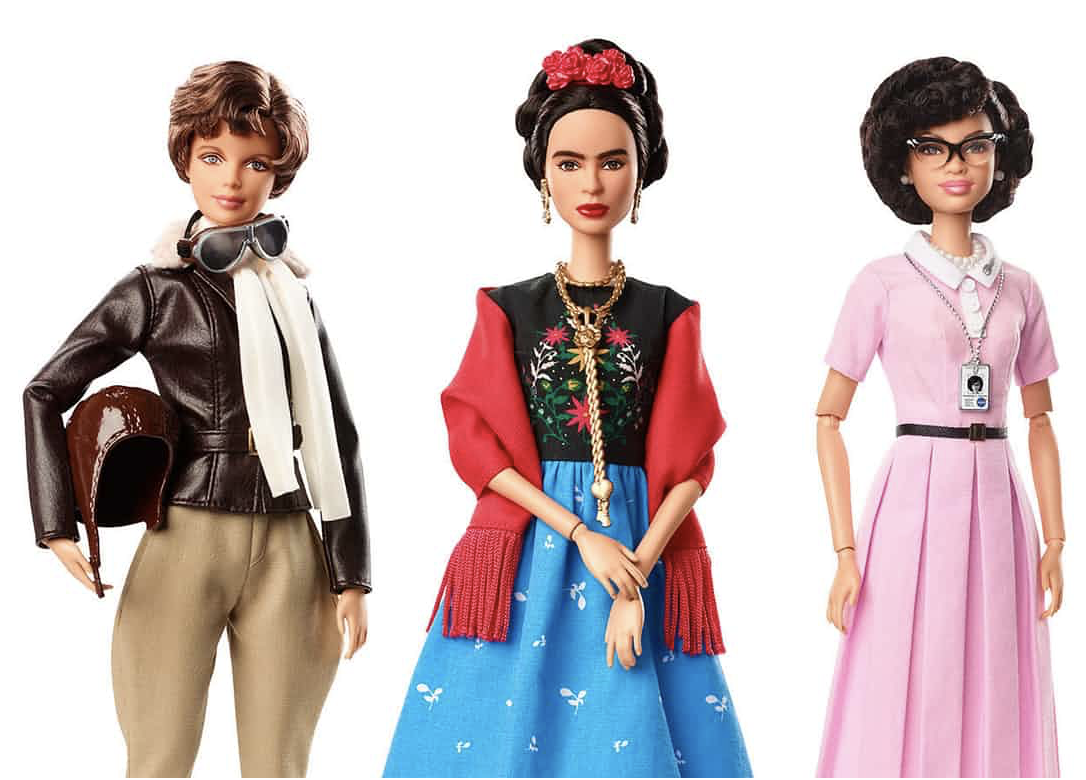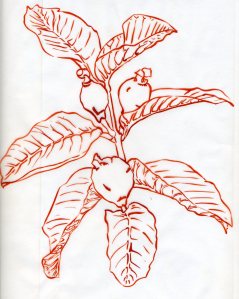










































The collections of books and images in art classrooms, available in galleries, on the internet, all represent an archive. As Mbembe reminds us when working with archives we construct narratives and linear progressions from fragments of information. The desire to construct a whole story that does not and cannot exist need to be resisted, it is illusory. There is a political element in the selection and construction of narrative that must be worked with, involving situation and stories that exist close by, within reach. In this way both teachers and students might feel a collective ownership recognising their own times, habits and cultures.
‘Through archive documents we are presented with pieces of time to be assembled, fragments of life to be placed in order, one after the other, in an attempt to formulate a story that acquires its coherence thorough the ability to craft links between the beginning and the end. A montage of fragments thus creates an illusion of totality and continuity. In this way, just like the architectural process, the time woven together by the archive is the product of a composition. This time has a political dimension resulting from the alchemy of the archive: it is supposed to belong to everyone. The community of time, the feeling according to which we would all be heirs to a time over which we might exercise the rights of collective ownership this is the imaginary that the archive seeks to disseminate (Mbembe, 2002 p21)’
Achille Mbembe The Power of the Archive and its Limits P21
In
edited by Carolyn Hamilton, Verne Harris, Michèle Pickover, Graeme Reid, Razia Saleh, Jane Taylor
Art played a pivotal part in the forming of my identity. The walls of my teenage bedroom were not covered in 1980’s pop band Duran Duran posters but postcards of art and artists. I am a fan of art. I acknowledge the term fan derives from a fanatical attachment, an unquestioning adoration often of a popular cultural phenomenon, greatly expanded by the use of social media and the internet. Star Trek’s Trekkies, pop music’s Beatlemania, Justin Biebers’ Beliebers. As C. Tate puts it in her article Fans of Feminism ‘To be a fan of something often indicates an over-attachment, an excessive engagement that goes beyond the intellectual (Tate, 2011)’.
Like Tate in her approach to feminism I occupy that space and look at that tension between ‘fan’ and ‘critical distance’ as an educator without abandoning the idea of fan but inhabiting that position which ‘focuses on attachment and desire’ as a point of exploration. In his work on representation Stuart Hall makes clear the emotional component of representation, identity and attachment. ‘Culture is about feelings attachments and emotions as well as concepts and ideas (Hall, 1997, p. xix)’. He reminds us that ‘[i]t is by our use of things, and what we say think and feel about them -how we represent them- that we give them meaning… Meaning is what gives us a sense of our own identity, of who we are and with whom we ‘belong’ (p. xix)’.
The process was a dynamic act of continuous movement, repetition and reflection over a period of time. As objects, projections and drawings went up others came down, were relocated and with new connections made, in a process akin to the description given by Terry Rosenberg of ‘ideational drawing’ which he describes as a process as ‘thinking-in-action and action-as-thinking’ rather than an end product, consequence or thought, the process is thinking in action. In my case it was a type of drawing with objects as well as drawings on paper. By performing a particular sort of activity ‘[t]hings are arranged deranged and rearranged’, I wanted to create a ‘space where thinking is presenced.’ ‘Objects are connected to other objects spaces to spaces objects to spaces subjects to objects and so on in an enthusiasm to see what is possible. It is all about connection and combination, this and this and this (Rosenberg, 2008).’ This bricolage like process, the action of the bricoleur taken from the term of Levi Strauss’ ‘The Savage Mind’ in which he distinguishes what language might tell us about how we use things as opposed to how we think about things. ‘The bricoleur reviews the materials they have at hand and ask how they might be used to complete, or approximately complete, the project (Levi-Strauss, 1966)’. Objects put it into the hand or at least within the hands reach. These object and tools represent limited sets, sets with original intentions that might be repurposed
The ‘bricoleur’ is adept at performing a large number of diverse tasks; but unlike the engineer, he does not subordinate each of them to the availability of raw materials and tools conceived and procured for the purpose of the project. His universe of instruments is closed and the rules of his game are always to make do with ‘whatever is at hand,’ that is to say with a set of tools and materials which is always finite and is also heterogeneous because what it contains bears no relation to the current project, or indeed to any particular project, but is the contingent result of all the occasions there have been to renew or enrich the stock or to maintain it with the remains of previous constructions or destructions
(Levi-Strauss, 1966, p. 17)
I see this as an example of the practice of the art teacher and students in the art class, working with materials that are to hand (‘the remains of previous constructions or destructions’ sounding remarkably like an art room stock cupboard), as in the Kenyan Tudor painting project illustrated earlier. Materials not of great intrinsic value, old books, cheap paper, pencils and paint. Whilst of course I am making reference the atelier, studio, workshop, bedroom or kitchen table where the real craft and graft of the artist could be evidenced as I am interested in making explicit the links between work, the labour involved and the end product of art. The image of the modern artist discussed here earlier, in smocks and overalls, the garb of the bricoleur or handyman, signify this labour, both as practical clothing to protect from the messy business of art, and ‘alternative’ as antithetical to the clean work of the office (Bourdieu, (1984) 2010, p. 292). I included images and object from my personal archive, my memory bank, like the post cards in my bedroom, objects of personal and practical significance, things that I think Frida Kahlo might have liked, or worn, tools that Barbara Hepworth might have used. Like Sherry Turkle I acknowledge ‘the secret power in things we hold dear.’ She describes ‘bricolage as a passionate practice where, sometimes, we fall in love with ideas because we fall in love with objects that put us in touch with these ideas. We think with the objects we love, we love the objects we think with (Turkle, 2007).’ It was my intention that the process of installation should be evident, it should be clear the gathering and arranging was both an active generative process and a thinking process, a making of physical, emotional and imaginary connections.

So my collection of photos of this lovely place and my drawing practice have started to pay off. I have been asked to design a range of woodblock prints for fabric to be used in children and babywear. I have so relished this process, drawing and redrawing. Pattern and Form. I am looking forward to what the Indian craftsman make of it.
The friend that asked me to do it, asked me to draw emblematic East African animals and plants with a Indian sensibility. We swiftly eschewed Giraffes and Rhinos, in favour of the wonderful animals that are less often drawn and therefore more interesting. Whilst working on the drawings I realised how close this idea was to my previous practice in ceramic. In which I explored the cultural richness of East Africa, through working with Islamic decorative motifs on strong bold clay forms. One on another.
Looking over my childrens’ books, seeking inspiration for my Reception Class, I realise that I LOVE these children’s books. Love them more than any adult book. The collection we have amassed through gifts and regular trips to book havens: the Owl Bookshop in Kentish town and Daunt Books in Belsize Park, is a wonder to behold. Shelves of charm from Ed Vere to the intricate details of Satoshi Kitamura. Of course they are all tied up with parenthood and nurture. Each has a memory: a birthday gift, a reward for achievements. These glorious books have carried us through from burbling baby to essay writing eleven year old. Helen Ward’s The Town Mouse and the Country Mouse is just exquisite, & Naughty Nina from Anna-Laura Cantone is perfectly bonkers! I have completely fallen for these illustrated books.
So it took me a while to settle on which book to work with in the Reception Class, I plumped for a combination of old favourites John Burningham and Eric Carle and relative new comer to us Catherine Rayner, whose beautiful ‘Augustus and his Smile’ will form the basis of our exploration into illustration.
Last weekend in preparation I made these mark making tools from scraps I found in our field. Tools to scratch and scape, to push and trail, to splash and flick. I think they enjoyed using them. I certainly did.
Chocolate was surprisingly hard to draw. It is mostly geometry and so easy to get wrong. Perspective skewed. I was drawing it whilst fasting, the smell of chocolate so strong … Continue reading Easter